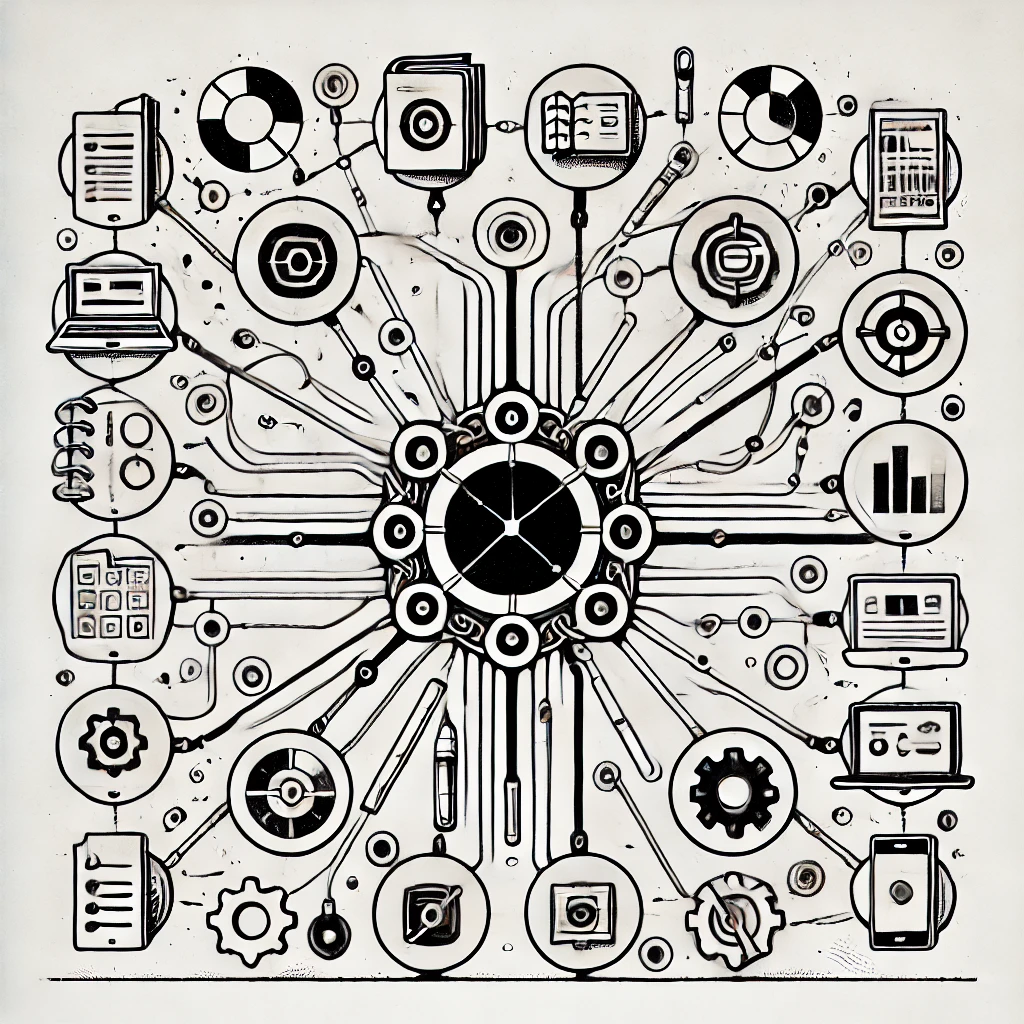In personal knowledge management, a Zettelkasten can serve as a lifelong companion for capturing, organizing, and interlinking ideas. However, while the benefits of the Zettelkasten method are widely discussed, less attention is given to the underlying system’s longevity. A robust setup ensures that your notes remain accessible and usable regardless of how software and tools evolve.
In this post, I’ll walk you through my setup, which prioritizes durability, portability, and adaptability, and explain the practical benefits from a user perspective.

Why Focus on System Longevity?
Software changes fast. Tools like Notion, Obsidian, or Roam Research can offer incredible features today but may change their business models, lose support, or even disappear. To prevent losing years of valuable notes, it’s essential to design a system independent of any single tool.
The key? Use open formats, decentralized storage, and workflows that can adapt to new tools as they emerge.
My Evergreen Zettelkasten Setup
1. Markdown for Portability
All my notes are stored as plain-text Markdown files. This approach offers several advantages:
– Open standard: Markdown is widely supported by many tools and platforms.
– Human-readable: Even without specialized software, the files can be easily read and edited.
– Tool-agnostic: Since almost every note-taking app supports Markdown, switching tools becomes simple.
2. Structured File Naming for Easy Navigation
To keep my notes organized, I use a structured file naming convention inspired by Niklas Luhmann’s Zettelkasten system. Each note receives a unique identifier, such as 123_17_knowledge_management_03d7dc503.md. This method ensures clear navigation and avoids issues with duplicate names.
I developed a Python script to automate this process:
– It generates unique IDs for new notes.
– It updates internal links whenever notes are renamed or moved.
This automation helps maintain consistency as the Zettelkasten grows.
3. Git for Version Control and Backup
To ensure my notes are always backed up and versioned, I store them in a Git repository. The benefits include:
– Version history: I can track every change and revert to previous versions if necessary.
– Reliable backup: The distributed nature of Git means my notes are stored across multiple devices.
– Cross-device sync: I can seamlessly sync my Zettelkasten between desktop, laptop, and mobile devices.
On mobile (iOS), I use Working Copy to pull my Git repository and edit notes in Obsidian. This workflow keeps my notes accessible wherever I am.
4. Flexible Editing with Multiple Tools
For editing, I rely on two main tools:
– Obsidian: A versatile Markdown editor with excellent linking and graph visualization features.
– VS Code: Ideal for bulk editing and working with large text files.
This flexibility ensures that I’m never locked into a single tool. If a new, better tool emerges, I can adopt it without disrupting my workflow.
5. Managing Media Files for Long-Term Access
Since I frequently use diagrams and images in my notes, I’ve established a straightforward approach to media management:
– I create visuals using apps like Concepts.
– Final images are saved in universal formats like JPEG or PNG.
– Media files are stored alongside the relevant notes, ensuring they remain accessible even if I switch tools.
Key Benefits of This Setup
1. Data durability: By using open formats and decentralized storage, my notes remain future-proof.
2. Portability: Switching tools is easy because my data isn’t locked into any proprietary platform.
3. Consistency: Automated naming and linking ensure that my Zettelkasten stays well-organized, even as it grows.
4. Flexibility: I can integrate new tools or workflows without losing access to my existing notes.
Practical Tips for Your Own Zettelkasten
– Start simple: Use plain text or Markdown for your notes.
– Automate where possible: Scripts can save time and reduce errors in large systems.
– Back up regularly: Use a version control system like Git to keep your notes safe.
– Stay adaptable: Design your system so that you can easily adopt new tools as needed.
Final Thoughts: Building for the Long Haul
A well-designed Zettelkasten system isn’t just about capturing knowledge—it’s about ensuring that your knowledge remains accessible and usable for years to come. By focusing on open formats, flexible tools, and reliable backups, you can build a system that grows with you and adapts to whatever the future holds.
I hope this post has provided some useful insights into creating a durable Zettelkasten setup. If you have your own strategies or questions, feel free to share them—I’m always interested in learning how others approach this challenge!

Leave a Reply